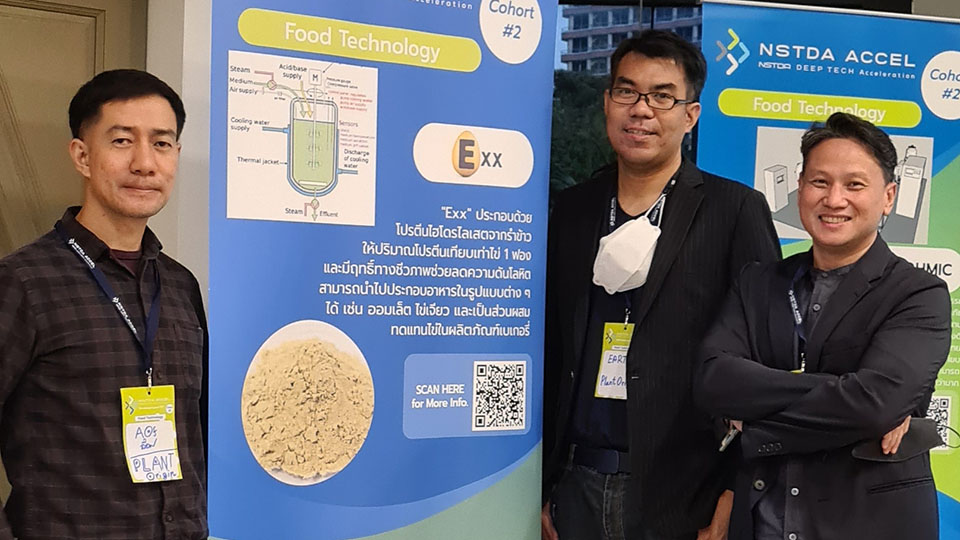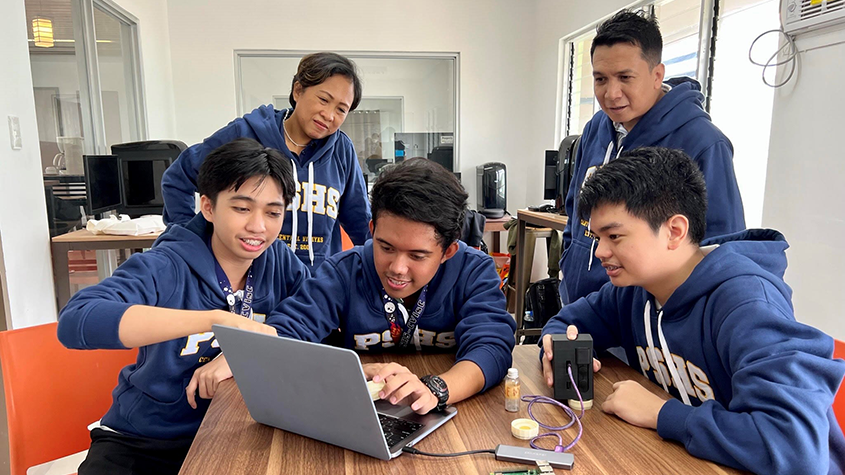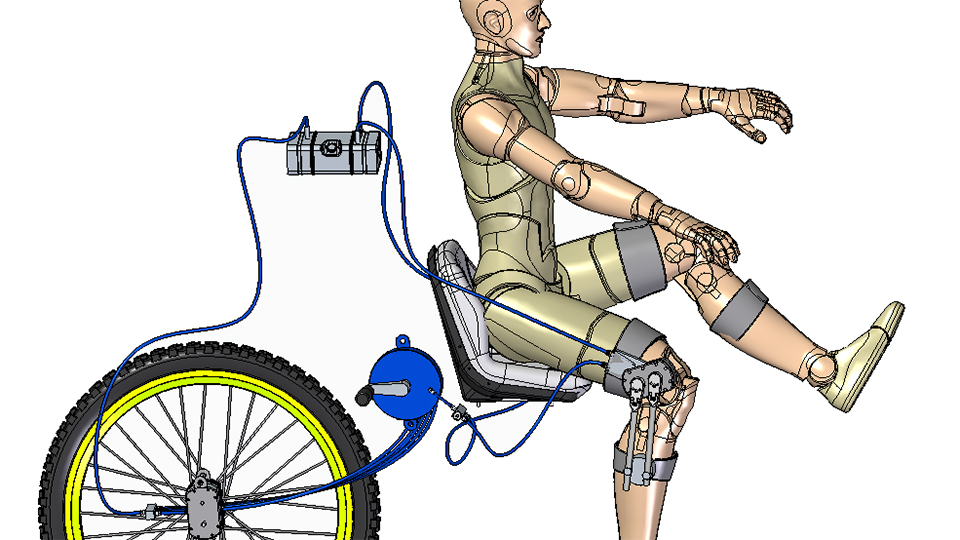Background

The San people of the Kalahari Desert in South Africa are one of the world’s oldest communities. For thousands of years, they have used the bitter flesh of hoodia gordonii (hoodia), a leafless succulent plant indigenous to the region, to suppress their appetite and give them energy for hunting or long trips over inhospitable land. In the spirit of their traditional collaborative lifestyle of uninhibited sharing, the San people often shared their traditional knowledge with outsiders in exchange for small gifts. Unbeknownst to them, much of their traditional knowledge has therefore been introduced in the public domain. This is what happened in the 1930s, when the San people shared their traditional knowledge of the use of hoodia with a Dutch anthropologist who published his findings in a book. In the 1960s the South African Council for Scientific and Industrial Research (CSIR), based in Pretoria, found this reference and began to take an interest in the plant.
After launching a significant hoodia research and development (R&D) program in 1990, CSIR recognized certain properties of a specific molecule of the plant (dubbed “P57”) that could be commercialized into an appetite suppressant and anti-obesity drug. Recognizing the potential market for such a drug that is derived naturally and is seemingly without side effects, CSIR decided to develop P57 further to create a safe and commercially viable product. After overcoming initial disagreements with the San people, CSIR recognized their traditional knowledge and negotiated one of the world’s first benefit sharing agreements, giving them a share of royalties derived from the sale of products containing P57.
Patents
After developing the P57 molecule, CSIR quickly recognized the importance of protecting its intellectual property (IP). It had spent significant resources developing P57 and knew that its success could be deterred by copiers. Securing IP rights (IPRs) was essential. Therefore in 1998 it filed a patent application under the international Patent Cooperation Treaty (PCT) system based on a national application filed in 1997 in South Africa. The patent covers the pharmaceutical compositions which were extracted from hoodia plants and identified as chemical products having appetite suppressant activity. CSIR also filed direct national patent applications in other countries such as the United States, where it was granted a patent from the United States Patent and Trademark Office (USPTO) in 1999.

PCT/GB1998/001100, PATENTSCOPE® search)
Licensing
Although CSIR is one of the leading scientific and technology R&D organizations in Africa, at the time of P57’s development it did not have the resources or market know-how to facilitate commercialization. Therefore it decided to license its patent first to Pfizer, a multinational pharmaceutical company, and then to Phytopharm, a pharmaceutical company based in the United Kingdom that has a plant extract division. Phytopharm was tasked with testing, developing and commercializing a viable product to be released in the multi-billion dollar weight loss market. Through this agreement, Phytopharm was able to work with Unilever, a multinational food company, to carry out clinical studies and further testing for eventual commercialization.
Research and Development
CSIR has been carrying out R&D into hoodia since 1963, and while the licensing agreement with Phytopharm represents a significant step towards commercialization, R&D is still ongoing. Much of hoodia research is carried out by Phytopharm, and early clinical studies funded by Pfizer yielded significant success when using the hoodia P57 molecule. Following these clinical trials, a joint development agreement was undertaken between Unilever and Phytopharm using different extracts and formulations from those previously studied. Combined with past research, all parties involved continue their R&D efforts to focus on developing a safe, commercially viable weight management food product.
The success of R&D into hoodia has also impacted CSIR’s other research activities. Recognizing the potential for developing new drugs with indigenous plants, hoodia research has spun off a rich portfolio of new R&D of drug candidates, including potential treatments for malaria, HIV, asthma, diabetes and inflammation. The further development of these candidates have benefited substantially from the product development platform that resulted from the hoodia research program.
Traditional Knowledge
With the licensing agreement in place, everything seemed to be going well for CSIR and its P57 patent. However, upon hearing of P57 and its origins, a group of non-governmental organizations (NGOs) criticized CSIR for exploiting the San people’s traditional knowledge. The NGOs claimed that CSIR did not recognize the San people’s role as the original holders of knowledge concerning the properties of hoodia and had no intention of sharing any benefits with them. Indeed, the San people had not been informed by CSIR of its intentions to patent P57, the subsequent successful patent application or of the licensing negotiations with other companies. The NGOs claimed that this was in violation of two international treaties to which South Africa is a signatory: the Convention on Biological Diversity, an international treaty to sustain the diversity of the earth; and the Bonn Guidelines, which require prior informed consent and benefit sharing arrangements with traditional knowledge holders.

survive in an inhospitable environment for generations
Once informed of CSIR’s patent, San communities formed the South African San Institute (SASI) and partnered with the Working Group of Indigenous Minorities in Southern Africa (WIMSA) and NGOs to campaign for the role of the San people’s traditional knowledge to be recognized. Realizing that it was unrealistic to focus on reversing the extensive R&D, patent applications and licensing agreements that CSIR had already carried out, SASI focused their efforts on achieving an agreement to ensure that the San people’s traditional knowledge would be recognized within the South African legal framework and that they would enjoy a significant amount of the benefits derived from P57’s commercialization. After a controversial process involving some legal negotiation, CSIR explicitly acknowledged the role of the San people, their traditional knowledge and innovative activity in the initial discovery and development of the properties of hoodia. This was set out in a Memorandum of Understanding in February 2002.
In March 2003, the goals of the San people were realized when they reached a benefit sharing agreement with CSIR. According to the benefit sharing agreement, Phytopharm and Unilever are the only authorized licensees for P57. Under this agreement, San communities receive eight percent of all milestone payments received from the licensee by CSIR and six percent of any royalties CSIR receives on sales of the final product. Milestone payments are paid during the clinical development stage on the successful completion of certain technical performance targets, and they are estimated to total between US$1 and US$1.5 million. Royalty payments have the possibility to bring in additional millions for the San people, who regularly suffer extreme economic hardships.
To manage this agreement, the 100,000 strong San population set up the San Hoodia Benefit Sharing Trust (the Trust), which ensures that the monies received are used for the general development and training of San communities. The Trust is composed of three representatives appointed by the South African San Council (San Council), a CSIR representative, a non-voting observer from the South African Department of Science and Technology, three representatives appointed by WIMSA, a member of WIMSA, and a professional appointed by the San Council. The first meeting of the Trust was held in April 2005 and shortly thereafter it received the first milestone payment of 500,000 South African Rand. Plans for the use of money received from the benefit sharing agreement include buying land, building clinics and investing in education and development projects.
Following a successful workshop, the Trust and CSIR decided that their relationship should not only involve monetary sharing, but also knowledge sharing. As a result, the San people are now involved in sharing their expert knowledge and ability to identify and pinpoint the properties of regional flora with the CSIR. The ground-breaking benefit sharing agreement, one of the first of its kind in the world, therefore represents enormous potential for future success of all parties involved, based on the San people’s extensive knowledge of the traditional uses of indigenous plants of the area.
Although significantly belated, the efforts of SASI, WIMSA and NGOs played a role in influencing the creation of significant protection of indigenous knowledge in South Africa through the Biodiversity Act of 2003 (Biodiversity Act). Under Chapter 6 of the Biodiversity Act, prospective bioprospectors (those researching traditional knowledge for commercial purposes) are required to apply for a bioprospecting permit in advance of any research. In the permit application, they are required to state:
- whether traditional indigenous ecological knowledge relating to the indigenous genetic resources is sought or to be used;
- whether the traditional use of the indigenous genetic resources is sought or to be used;
- whether the indigenous genetic resource is endemic to land owned or occupied by any local indigenous community or associated with land rights; and
- whether prior informed consent of local indigenous communities has been given.
The Biodiversity Act is complemented with an addendum to the South African Patent Act in 2005, which requires a patent applicant to state on oath whether the patent contains the use of or reference to any indigenous or traditional knowledge.
Commercialization
All developed products will be commercialized by CSIR’s licensee, Phytopharm. Working together with CSIR, Phytopharm has created a clinical and botanical supplies unit for processing hoodia to produce high quality, safe material for clinical testing. Currently hoodia is cultivated as a part of this program throughout different regions in South Africa. Local San communities are also involved in the cultivation process. Cultivation will be the main source of the hoodia P57 molecule to be used in commercialization.

Culture, Science and
Technology, Dr. Ben Ngubane,
is being shown how Hoodia is
traditionally sliced and eaten
by Mr. Petrus Vaalbooi,
Chairman of the San Council,
with Dr Sibusiso Sibisi,
CSIR President, looking on.
The benefit-sharing agreement
between the San and the CSIR
was signed on the same day, with
Dr. Ngubane as witness
IP Infringement and Unfair Competition
The hoodia plant has received significant media attention since patenting of the P57 molecule and the benefit sharing agreement with the San people. Although the patented product is not yet on the market, by 2003 hoodia preparations in capsule and liquid form were pouring into the market. Because CSIR’s patent is on the P57 molecule itself and not the plant, there is little recourse available to both the San people and CSIR to stop commercialization of new hoodia products.
However, more often than not, most of these hoodia preparations are marketed in an attempt to bypass the P57 patent but at the same time capitalize on its success and media exposure. These products have not been clinically tested to be safe and do not use the P57 molecule (a complex process is required to isolate the specific molecule), but are using unfair competition tactics and claim the same benefits of P57. Many of these products also claim some relationship to the San people, or quote the usage of the plant as an appetite suppressant by the San. The use of the hoodia name, unauthorized association to the San people, promises of safety and effectiveness, and taking advantage of P57’s media attention confuses and misleads consumers. It also damages the reputation of CSIR and could have a serious impact on the commercial success of P57, thus limiting the financial benefit that the San people are entitled to and so desperately need.
The San people have made it clear that the benefit sharing agreement with CSIR only authorizes Phytopharm or Unilever to commercialize P57. Any other products claiming similar benefits of P57 or association with the San people are in violation of the benefit sharing agreement and the San people’s right to their traditional knowledge. Currently several NGOs, the San people and Phytopharm are campaigning for governments to take steps against the sale of these products not only because of their dubious legal nature, but also because they are commercialized outside of the benefit sharing agreement and do not recognize the role of the San people’s traditional knowledge.
Business Results
While no products have been commercialized by Phytopharm or Unilever as of late 2010, the benefits of the development of P57 and its subsequent patenting have already been felt by CSIR and the San people, and this will continue in the future as products are released. First and foremost, it has given the San people access to desperately needed funds. The knowledge sharing partnership between CSIR and the San people also brings the opportunity for the development of more innovative IP and corresponding economic benefits. Future commercialization can also create many jobs for the San people, as their traditional knowledge makes them the best hoodia cultivators.
Recognizing Traditional Knowledge
The benefit sharing agreement reached between the San people and CSIR is a great step forward in the recognition of the collective rights of indigenous communities as holders of traditional knowledge related to biodiversity. It has recognized the importance of potential national IP assets, and shows how countries could profit from identifying and assessing their competitive sectors, thus enabling innovative activity in those areas. It is also an example of how IPRs can be creatively used as a catalyst to negotiate licensing agreements and partnerships with knowledge asset holders. Serving as an example for potential future benefit sharing agreements, the partnership between CSIR and the San people illustrates how IP can be used to positively impact national economic growth and development.



